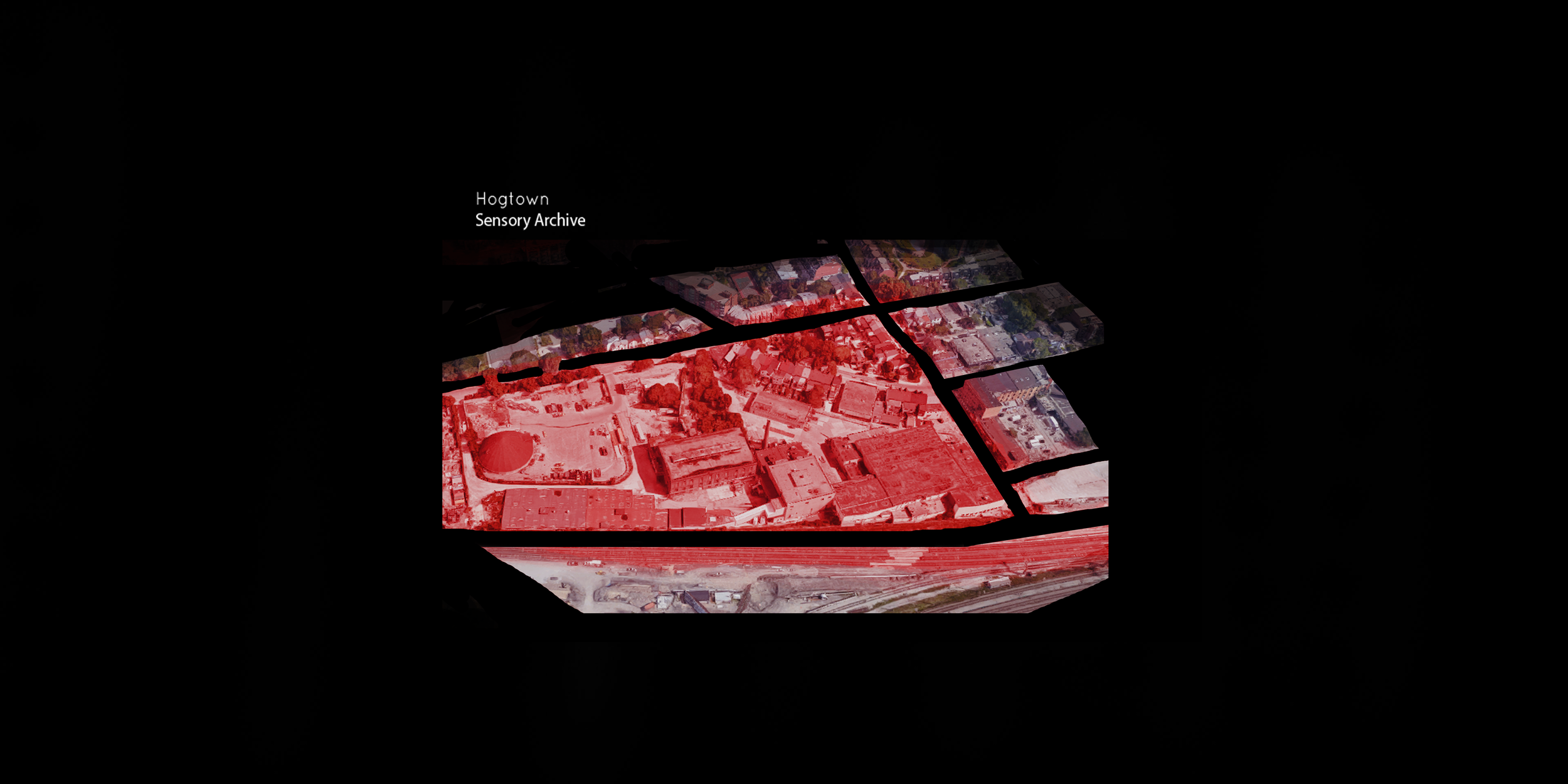
Hogtown Sensory Archive is an interactive archive in VR that explores the multiple histories and communities surrounding Toronto’s last operating abattoir. The project is located on the site of the new abandoned Quality Meat Packers plant, in operation from 1914-2014. Closing just shy of its 100th birthday, the abattoir reflected one of the last historical remnants of Toronto’s meatpacking industry. Located in a once industrial area of the city, the factory now lies at the heart of a booming downtown district that has undergone extensive gentrification and urban redevelopment in recent years.
Working out of sensory ethnography, the project involved site-specific methods including sensory mapping/participant observation, 360-video documentation, photography, field soundscape recordings, community interviews, and archival research. As a focal point of the neighbourhood, the site is activated into a “sensory archive” in which narratives around food production, industry, labour, public health, heritage, community, and displacement branch out.
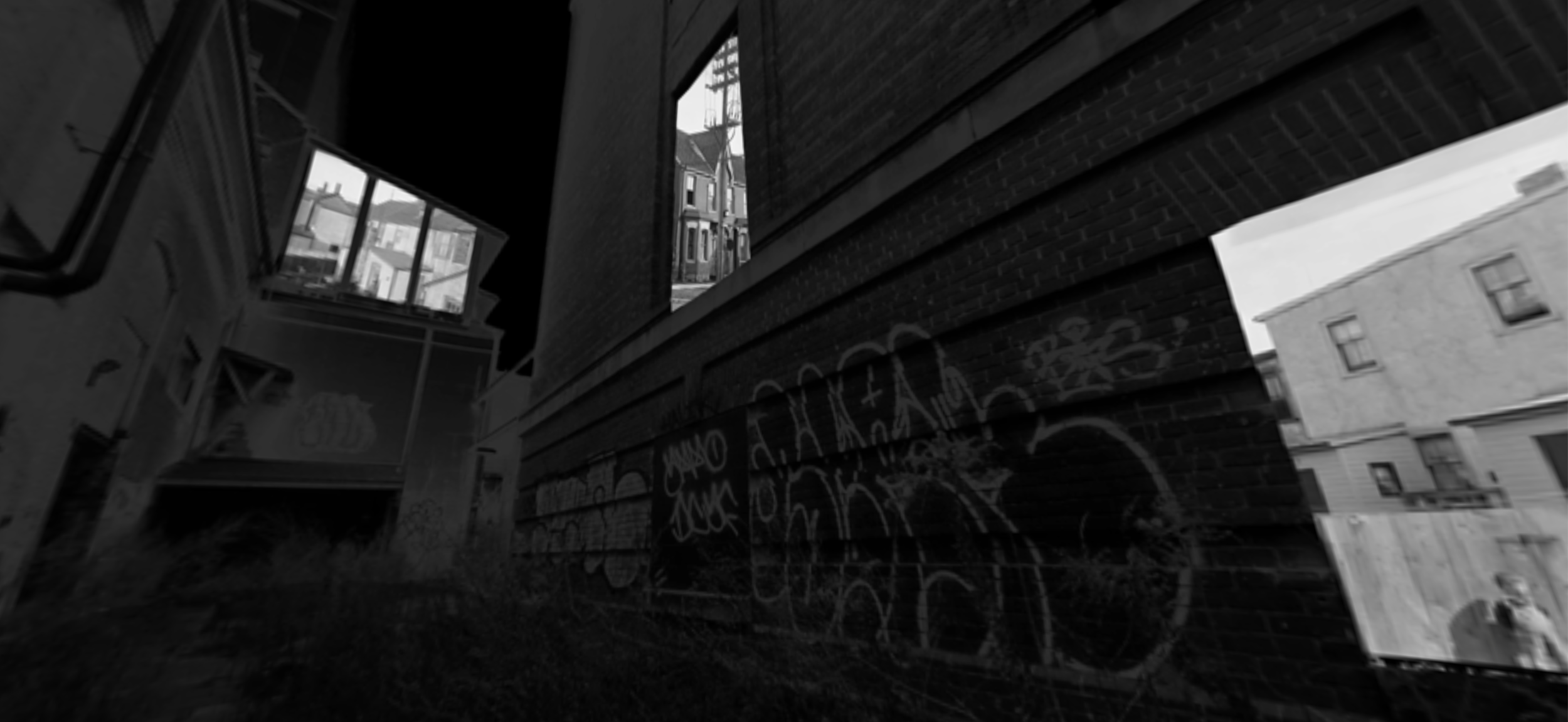
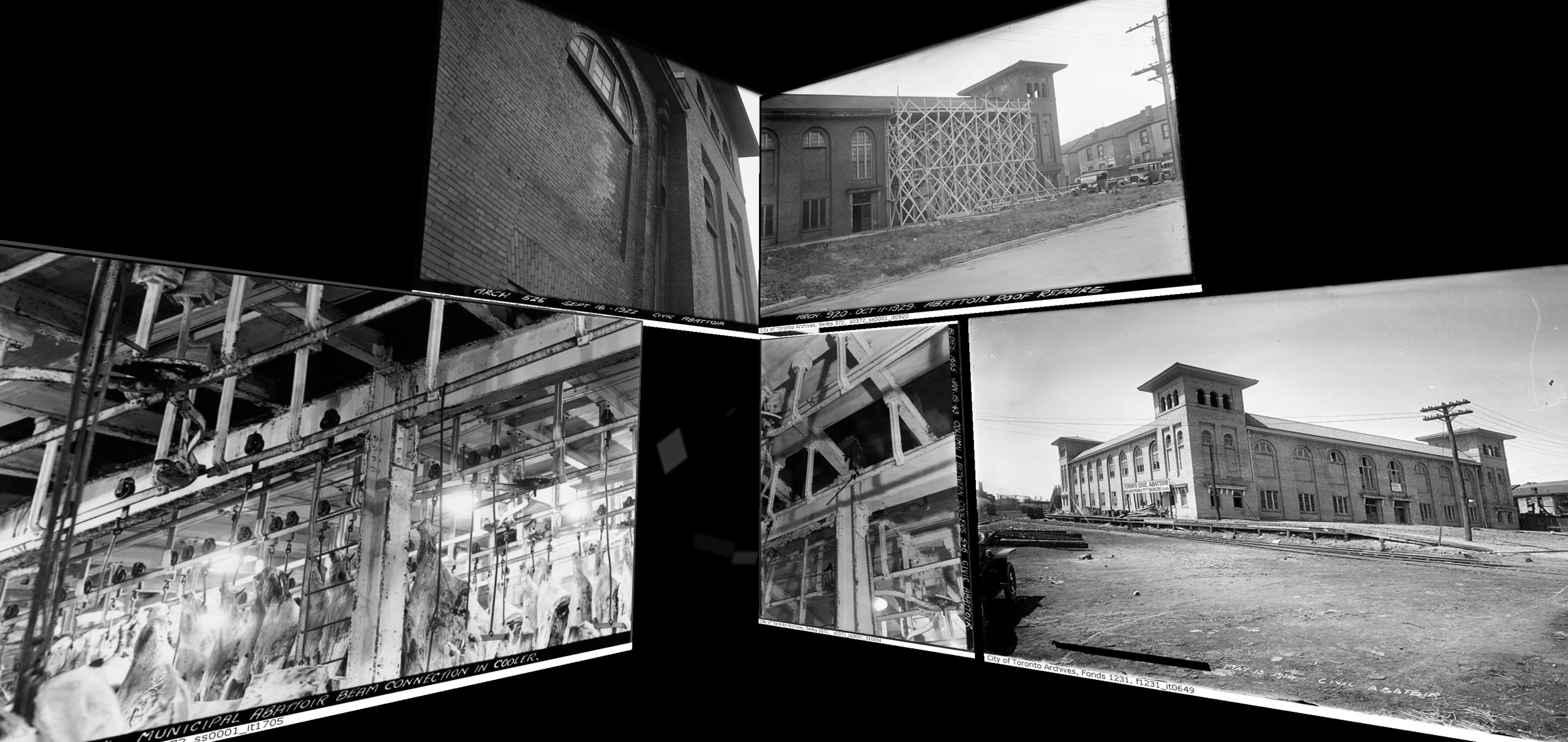
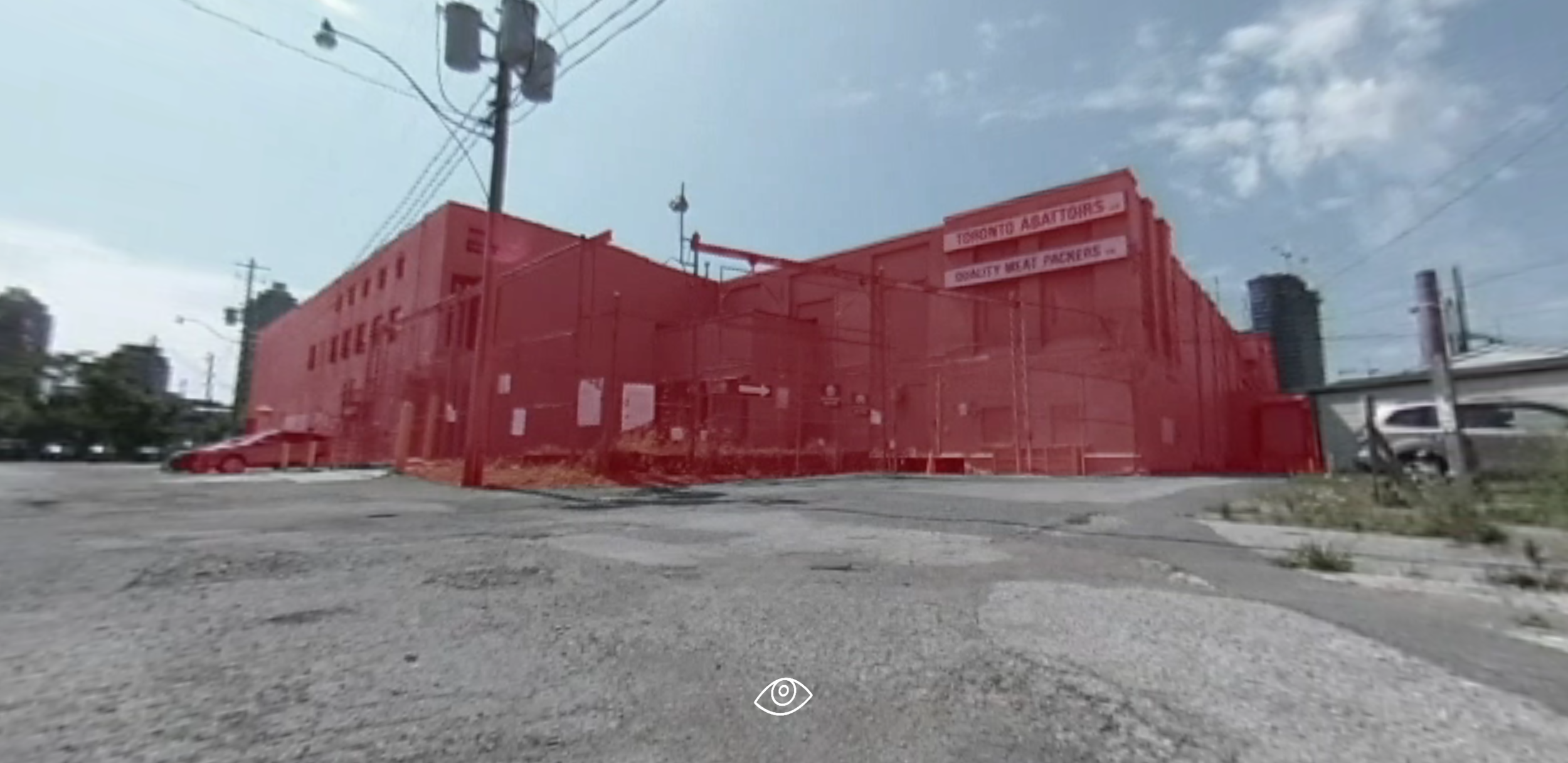
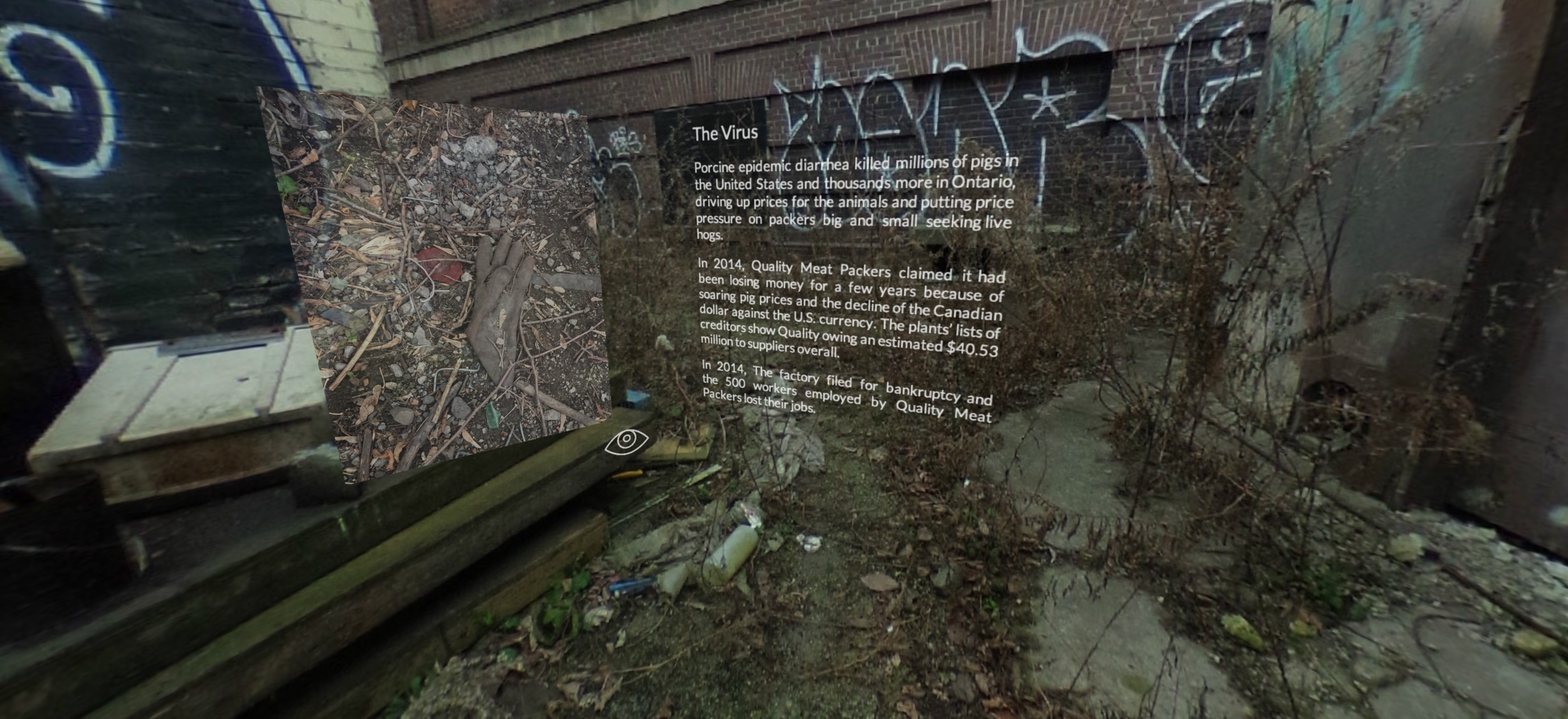
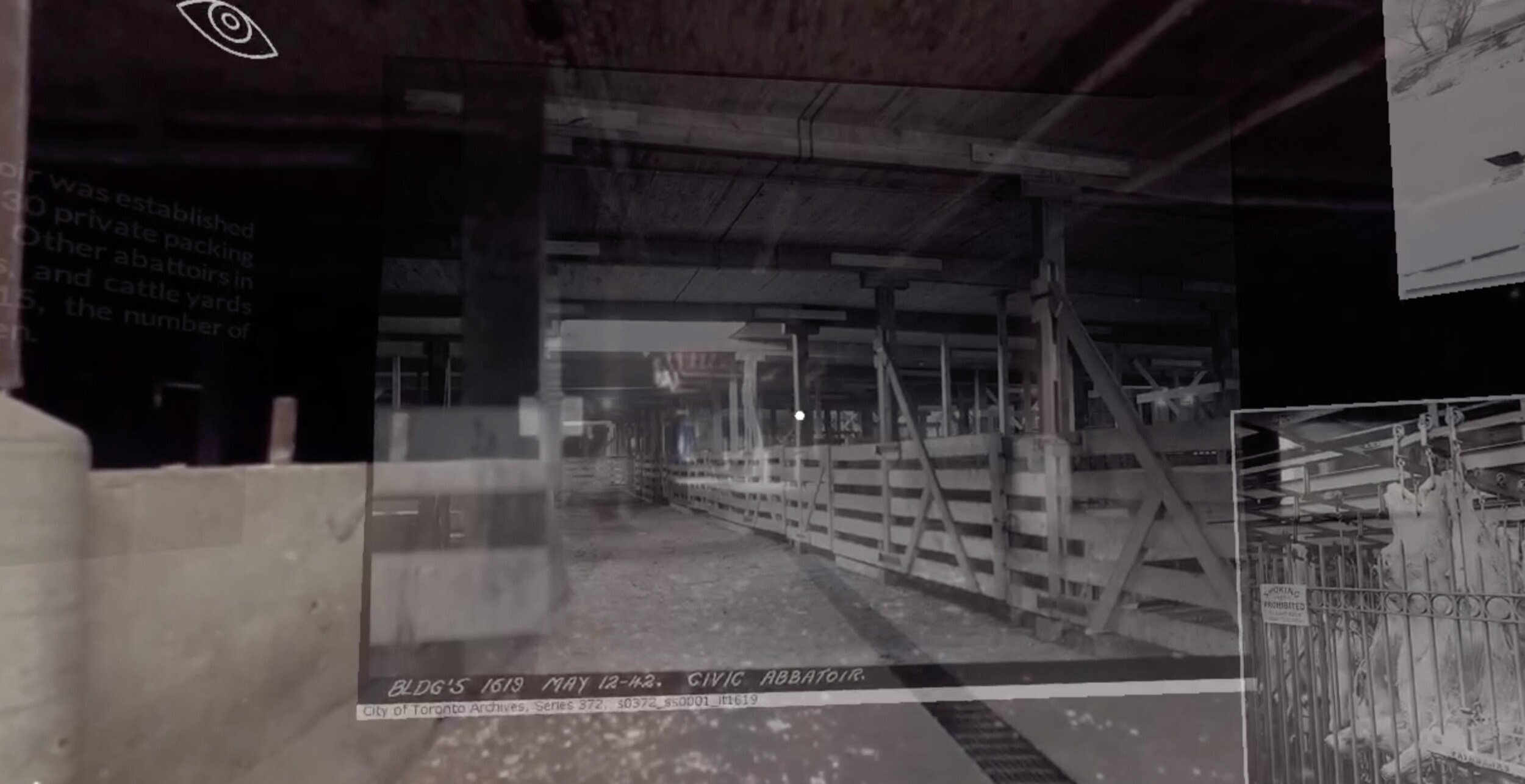
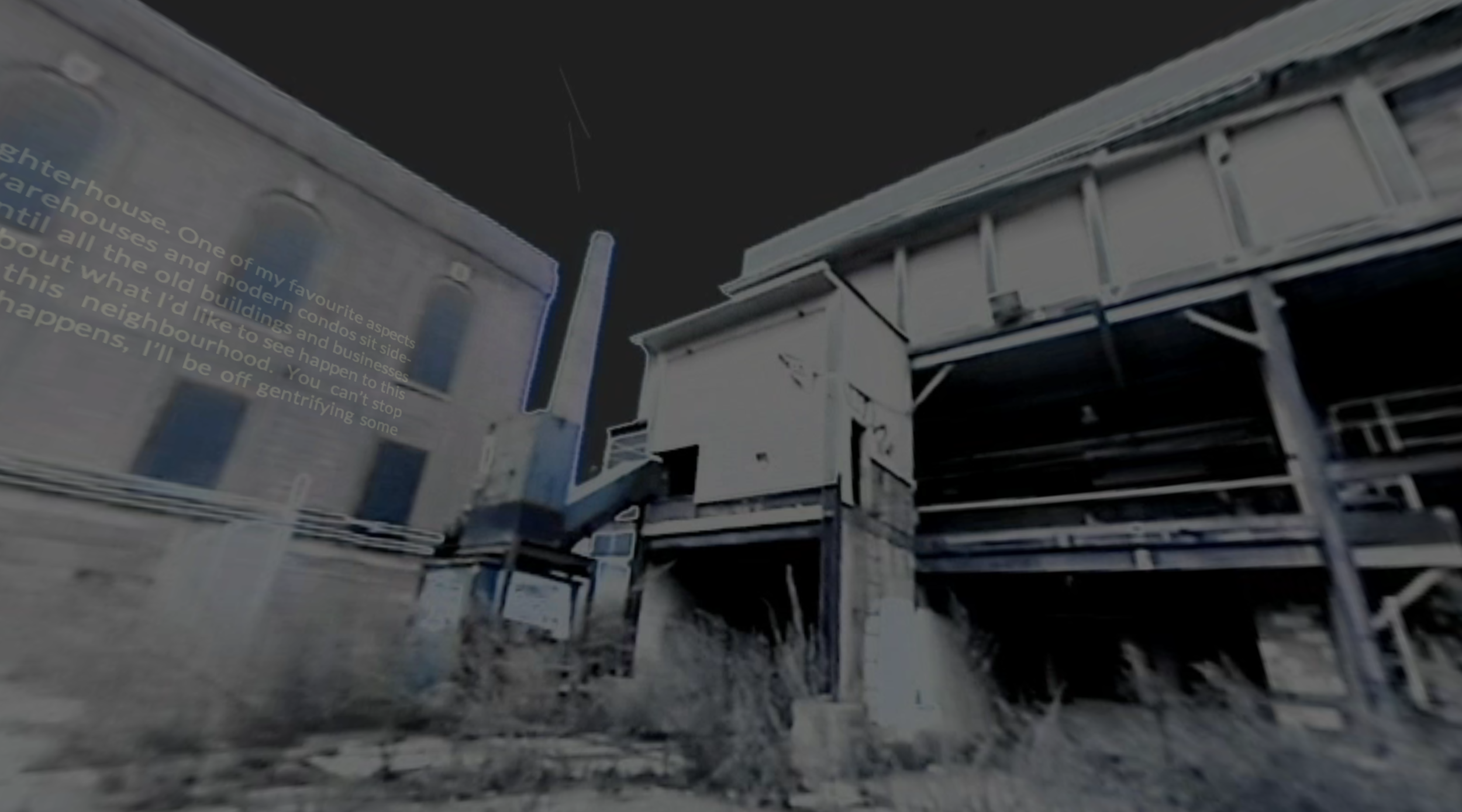







Hogtown Sensory Archive is an interactive archive in VR that explores the multiple histories and communities surrounding Toronto’s last operating abattoir. The project is located on the site of the new abandoned Quality Meat Packers plant, in operation from 1914-2014. Closing just shy of its 100th birthday, the abattoir reflected one of the last historical remnants of Toronto’s meatpacking industry. Located in a once industrial area of the city, the factory now lies at the heart of a booming downtown district that has undergone extensive gentrification and urban redevelopment in recent years.
Working out of sensory ethnography, the project involved site-specific methods including sensory mapping/participant observation, 360-video documentation, photography, field soundscape recordings, community interviews, and archival research. As a focal point of the neighbourhood, the site is activated into a “sensory archive” in which narratives around food production, industry, labour, public health, heritage, community, and displacement branch out.